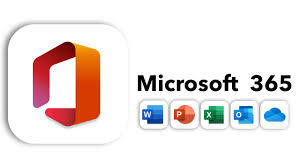
SharePoint is a web-based collaborative platform developed by Microsoft that enables organizations to store, organize, share, and access information from any device with an internet connection. It offers a wide range of features for document management, content management, intranet portals, team collaboration, workflow automation, and business intelligence. SharePoint can be deployed either as an on-premises solution (SharePoint Server) or as a cloud-based service (SharePoint Online).
Blog Series
- Part 1 – Getting Started with SharePoint Online
- Part 2 – Set up PowerShell for SharePoint Online Administration
- Part 3 – Create and Remove SharePoint Sites
- Part 4 – Configure Storage Limits on SharePoint Sites
- Part 5 – Configure External Sharing for SharePoint and OneDrive for Business
- Part 6 – Enable File Requests in SharePoint Online and OneDrive for Business
- Part 7 – Managed Metadata with SharePoint Term Store
Difference Between SharePoint Servers And SharePoint Online
SharePoint is offered in two primary formats: a local server deployment and a cloud-based version known as SharePoint Online. Despite sharing similar features, each option provides distinct advantages to customers.
| Aspect | SharePoint Server | SharePoint Online |
| Deployment | Installed and managed on-premises within the organization’s data center. | A cloud-based version of SharePoint. |
| Maintenance | The organization is responsible for the maintenance. | Microsoft handles maintenance tasks. |
| Scalability | Limited by the organization’s infrastructure. | Easily scalable. |
| Integration | More flexibility for customization and integration with on-premises systems and applications. | While SharePoint Online supports customization and integration, capabilities may be more limited compared to SharePoint Server. |
Types of SharePoint Sites
In SharePoint, Team Sites and Communication Sites serve different purposes and are designed to cater to distinct collaboration and communication needs within an organization. Here’s a breakdown of the key differences between the two:
Team Site
This is primarily designed for content management and collaboration among members of a specific team or group within an organization. It provides tools for document management, project coordination, task tracking, and team communication. It is possible to create a Team Site either with or without a Microsoft 365 Group and here are the differences between the approaches
- Team Site with Microsoft 365 Group (Microsoft Teams):
- Provisioning: When you create a Team Site with a Microsoft 365 Group, the SharePoint site is provisioned along with a corresponding Microsoft 365 Group. This group integrates various Microsoft 365 services, including SharePoint, Exchange, Teams, Planner, and others. For example, the SharePoint document library is accessible from within Microsoft Teams, and conversations in Teams are linked to the associated SharePoint site.
- Automatic Permissions: Members added to the Microsoft 365 Group are automatically granted access to the associated Team Site, simplifying permission management.
- Team Site without Microsoft 365 Group (Standalone Site):
- Independent Provisioning: When creating a Team Site without a Microsoft 365 Group, the site is provisioned as a standalone SharePoint site. It does not have the additional integrations and features associated with Microsoft 365 Groups. The Team Site exists independently of other Microsoft 365 services, such as Exchange and Teams.
- Manual Permissions: Permissions for the site need to be managed manually. Unlike with a Microsoft 365 Group, where membership automatically grants access to associated resources, permissions for standalone Team Sites must be configured explicitly.
Communication Site
This is focused on fostering communication across a wider organization. such as broadcasting news, announcements, policies, and other informational content to a wide audience such as an entire department or the entire organization.

